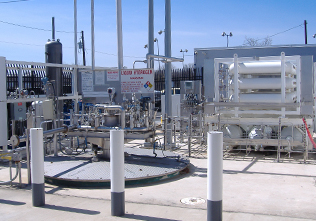A team of researchers at MIT has come up with an out-of-the-ordinary method for accurately predicting wind speeds for proposed wind farms. The new system uses only 3 months of data, compared to the 8- to 12-month period typically required to select a site for new wind farms. That’s a huge deal in the wind industry. A typical wind farm only takes a few months to build, so cutting several months off the pre-construction timeline is a significant improvement.
Normal Vs. Abnormal
The new MIT model for wind farms represents a 180-degree shift from the way the wind industry typically predicts wind speeds at sites for wind farms.
Here in the US, the timing is perfect because the American Wind Energy Association is just updating its wind farm handbook for developers.
The conventional method is to correlate wind speed data using a relatively simple form of statistical analysis called normal or Gaussian distribution. If you’ve seen a bell curve chart, that’s basically what it is.
MIT writer Larry Hardesty describes the process thusly:
Typically, a wind energy consultant will find correlations between wind speed measurements at a proposed site and those made, during the same period, at a nearby weather station where records stretch back for decades. On the basis of those correlations, the consultant will adjust the weather station’s historical data to provide an approximation of wind speeds at the new site.
Did you catch that thing about “a weather station,” as in a single weather station? That’s a key difference in the new MIT method. The MIT method is based on data from more than a dozen stations.
The result is a method for analyzing sites for wind farms that breaks the model into much more expansive territory, which we’re calling abnormal since it’s not normal:
…it’s not restricted to Gaussian probability distributions. Moreover, it can use different types of distributions to characterize data from different sites, and it can combine them in different ways. It can even use so-called nonparametric distributions, in which the data are described not by a mathematical function, but by a collection of samples, much the way a digital music file consists of discrete samples of a continuous sound wave.
Wind Energy Poised For World Domination
The cost of wind energy has been dropping at a breakneck pace, and the new model will help that trend along by condensing the timeline for the development of new wind farms, as well as helping wind developers to identify sites more accurately.
Taller wind turbine towers and new advances in wind turbine technology are other critical factors moving forward. A couple of things that caught our eye were GE’s new “ugly duckling” wind turbine concept, and the Energy Department’s new longer turbine blade initiative.
Here in the US, the cost of wind energy essentially means the cost of onshore wind farms, since the offshore sector has yet to take off. However, we’re already seeing indications thatoffshore wind energy costs are on the way down, and offshore wind activity is beginning to bubble up.
Despite a Koch-connected obstruction effort, the Obama Administration has started leasing out Atlantic Coast offshore wind farm sites. The Administration is also funding research leading to floating wind turbines, for tapping offshore wind energy along the Pacific coast.
Another development that caught our eye is a proposed new offshore wind farm for Hawaii, which is forging ahead while maneuvering delicately around the island state’s unique set of economic, social, and environmental issues.
What About Those Micro Wind Turbines?
Somewhat ironically, the new wind speed prediction model owes its development in part to micro wind turbines. In 2009, the Museum of Science in Boston installed a set of rooftop micro wind turbines, which gave the facility an excuse to mount anemometers on its roof (anemometer is fancyspeak for a wind speed and pressure measuring device).
That anemometers provided a golden opportunity for the wind farm team to check the accuracy of their new model. With the preliminary verification in hand, the next step was to apply the model to historical data from an actual wind farm site.
The team found that their new “abnormal” model could churn out an accurate prediction of wind speeds over two years, while using only 3 months of data.
But wait, there’s more. The model also proved to be 3 times more accurate than a conventional model that used 8 months of data.
The Museum of Science anemometer is the gift that keeps on giving. After subjecting data from the instrument to additional analysis, the team published a new study that shows a potential doubling of the accuracy of their predictions.
Image by Jose-Luis Olivares, via MIT.
Source: cleantechnica.com







